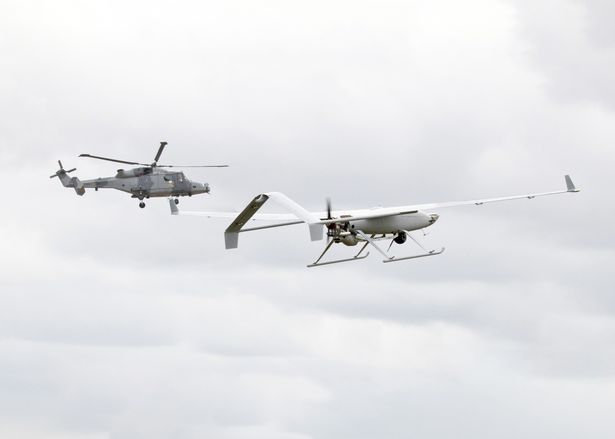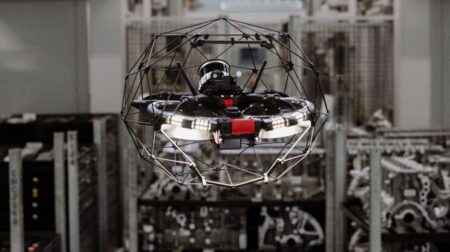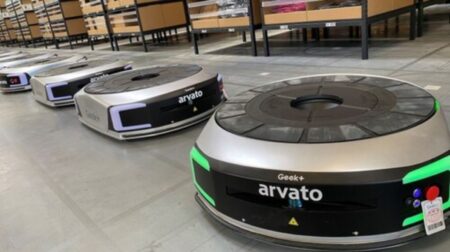A helicopter and unmanned aerial vehicle (UAV) have been successfully integrated during a UK-first trial.
The demonstration was carried out on the Salisbury Plain and saw crew from Italian helicopter company Leonardo control a semi-autonomous UAV from an AW159 Wildcat cockpit during manned-unmanned teaming (MUMT) trials.
The crew managed to control the UAV, which was supplied by technology solutions consultancy Callen-Lenz Associates, as if it was one of the aircraft’s on-board sensors, thereby increasing the crew’s situational awareness and minimising additional pilot workload.
Nick Whitney, managing director of Leonardo Helicopters UK, said: “The success of this manned-unmanned trial highlights that Leonardo and the UK MoD are investing together in the future of UK rotorcraft engineering and it demonstrates further the value of a long-term partnering approach in terms of capability development.”
Both the flight path and payload of the UAV can be controlled by the helicopter crew using a task-based human machine interface. According to Leonardo, the MUMT can also increase tempo, lethality, survivability and combat mass of aviation forces allowing pilots to focus on the mission at hand.
Furthermore, combining manned aircraft with UAVs is said to enhance air support capability in both land and maritime environments, as well as enabling extended and complex operations to be conducted with a mix of platforms and systems.

The demonstration, which was supported by the Defence Science and Technology Laboratory’s (Dstl) on behalf of the British Army, was the first time such an integrated capability had been demonstrated in the UK on a military aircraft, and followed successful simulation-based development as part of a Dstl-funded programme.
Benjamin Thomas, military adviser platform systems division at Dstl, said: “The development of the Wildcat-integrated MUMT solution has been impressive, culminating in the successful demonstration of the capability on AWE 19 in a series of representative military vignettes.
“MUMT has undoubtedly the potential to be a game-changing capability for aviation operating in the land environment, increasing both situational awareness and survivability.”








